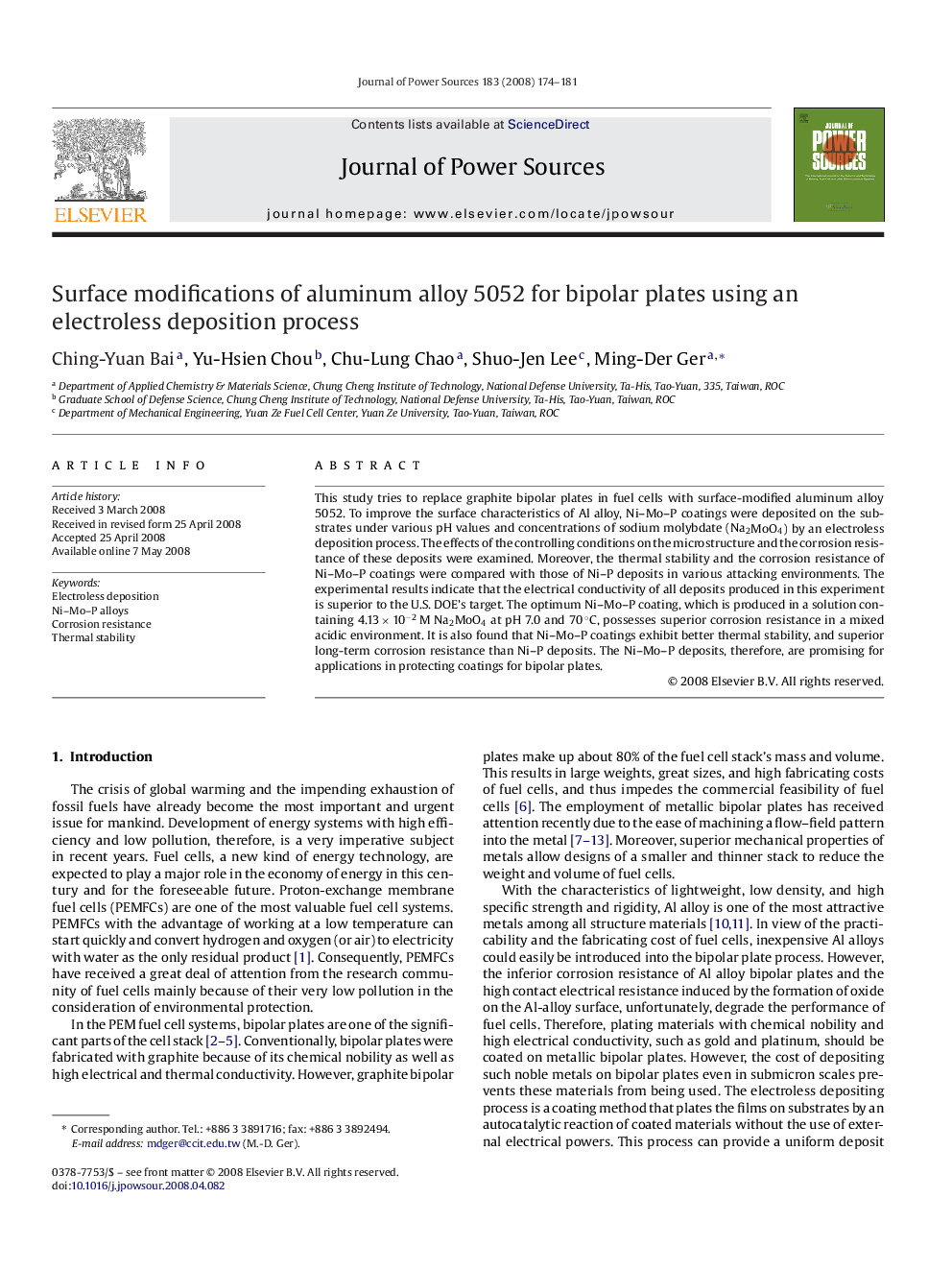| Article ID | Journal | Published Year | Pages | File Type |
|---|---|---|---|---|
| 1285396 | Journal of Power Sources | 2008 | 8 Pages |
This study tries to replace graphite bipolar plates in fuel cells with surface-modified aluminum alloy 5052. To improve the surface characteristics of Al alloy, Ni–Mo–P coatings were deposited on the substrates under various pH values and concentrations of sodium molybdate (Na2MoO4) by an electroless deposition process. The effects of the controlling conditions on the microstructure and the corrosion resistance of these deposits were examined. Moreover, the thermal stability and the corrosion resistance of Ni–Mo–P coatings were compared with those of Ni–P deposits in various attacking environments. The experimental results indicate that the electrical conductivity of all deposits produced in this experiment is superior to the U.S. DOE's target. The optimum Ni–Mo–P coating, which is produced in a solution containing 4.13 × 10−2 M Na2MoO4 at pH 7.0 and 70 °C, possesses superior corrosion resistance in a mixed acidic environment. It is also found that Ni–Mo–P coatings exhibit better thermal stability, and superior long-term corrosion resistance than Ni–P deposits. The Ni–Mo–P deposits, therefore, are promising for applications in protecting coatings for bipolar plates.
